Paintings, photographs, sculptures, drawings, video clips, GIFs, and more. Everything can be turned into crypto art if you know the rules of NFTs and the blockchain network. The crypto world moves millions of dollars daily, and you can’t stay down from this phenomenon. No matter if you start selling your art for a few dollars, the crypto market is growing and growing. It’s your time to be part of history.
So, do not hesitate to enter this world and rock the rules. May you be the next Andy Warhol of crypto art. But if you don’t know What crypto art is yet, then this is the article for you.
Read the following lines and bring value to your crypto life. Bitcoin, Ethereum, Polygon, and NFTs are more than just numbers or images on your computer. Let’s delve into this phenomenon together.
What Is Crypto Art?

Crypto art corresponds to digital art based on cryptocurrency and blockchain technology. It means digital artwork, like music, images, videos, etc., that relies on the crypto world.
Crypto art is another concept for NFT art. As such, crypto art is a unique piece of digital art that can be created directly on NFT platforms or software or physically and then digitized to incorporate it into the blockchain.
Just like physical art, which is a unique piece of art since the artist signs it, crypto art should contain a non-fungible token as proof of its authenticity and uniqueness.
Although NFTs are not only suitable for crypto art, digital artists, collectors, art holders, and other stakeholders see NFT technology as the natural path for crypto art. This is why the digital art world has started to turn in this direction.
According to Statista, the total sales value of NFT collectibles and art worldwide amounted to 30 million dollars in 2020.
Some Crypto Art Examples
Let’s check some examples of excellent crypto art that nowadays are rocking the crypto world and the art in general.
OxFormations by Pak
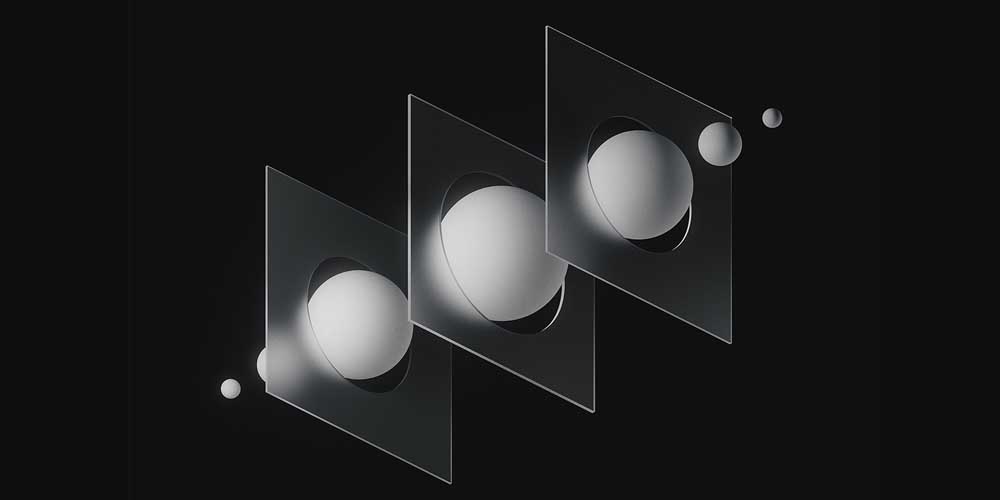
This crypto art corresponds to digital paintings built with simple geometric shapes. It reminds us of suprematist paintings or the Futurism of Giacomo Balla, the Italian painter. Pak, the artist, created a series of paintings with similar inspiration, recreating geometric forms like planets that float in a darker space.
Lost in a Moment by Mad Dog Jones

Mad Dog Jones revolutionized the digital world with their creations based on a cyberpunk aesthetic as they were extracted from games like Final Fantasy VII or movies like Blade Runner. Their art is built with many collectibles created from real images and intervened with digital painting.
Disney Plus Content Generation by Beeple
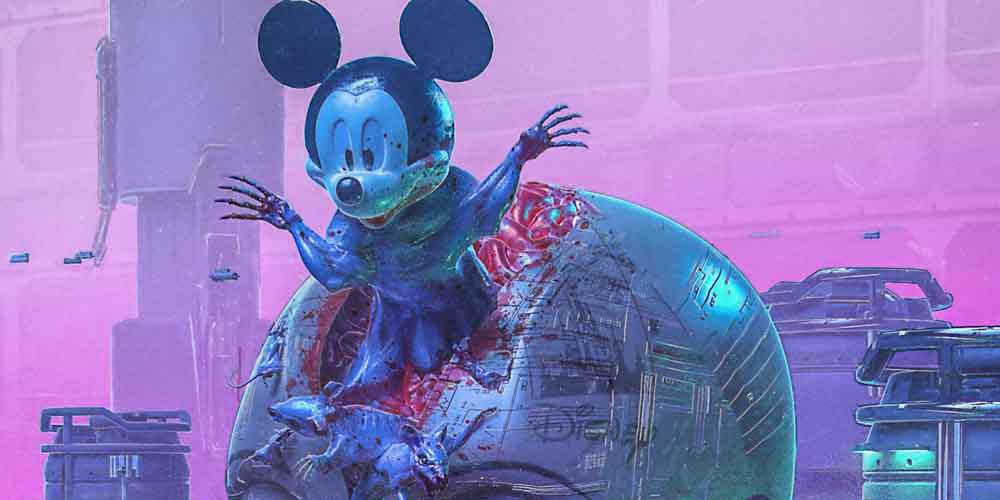
Beeple creates a variety of digital artworks based on pop culture and recognizable icons, like Mickey Mouse, Yoda from Star Wars, and Buzz Lightyear. The Beeple’s art takes a lot from 60’s pop art artists, like Andy Warhol or Roy Lichtenstein, where bright colors coexist with dark scenarios and funny scenes.
What Is a Crypto Artist?

A crypto artist is a person who works in the crypto universe by creating pieces of art on the blockchain network. Crypto artists can be painters, photographers, sculptors, designers, architects, and other professionals with impressive management of the visual arts.
Many times, crypto artists work directly on the platforms by releasing collections with unique traits. This way, there are endless possibilities for combination since the platform randomly mixes all the traits and creates unique crypto art with a different rarity, meaning some pieces are rarer than others.
But crypto artists also create crypto art that can become “real” in the real world by printing their art and exhibiting it in galleries and museums. They can also create art in the real world with their own hands and then mint them as NFTs. This way, their art piece continues to be valuable on the real market.
Examples of Crypto Artists
In the section above, we’ve already mentioned some artists, but it does not hurt to mention another couple of good crypto artists.
Snowfro
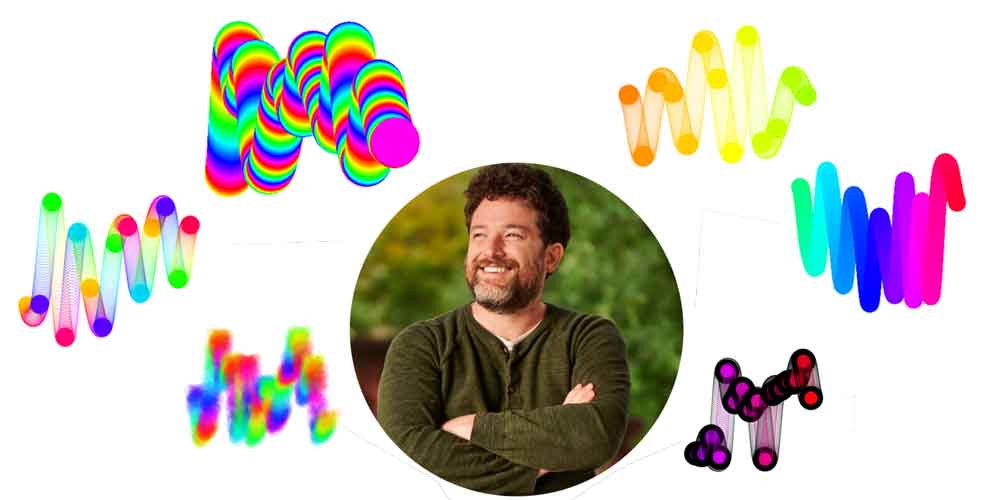
Snowfro, Erick Calderon, is an artist and designer based in Houston, Texas, whose artwork is based on geometric and colorful shapes. His work is strictly abstract, and his pictures look like quick drawings that reflect the action of his hands. Snowfro is also the creator of Art Blocks, a project that allows users to collect blocks embedded in the blockchain platform.
Tyler Hobbs

Tyler Hobbs is a young crypto artist, painter, and creative coder whose artwork has been exhibited in multiple galleries around the world, becoming one of the most crypto artists nowadays. Tyler Hobbs’s art goes from small drawings and paintings and giant murals. Most of them have geometric motives and basic colors.
What Are the Main Differences Between Traditional and Crypto Art?
Traditional and crypto art share many similarities. They both originate from a piece of art—a painting, drawing, or visual creation—presented in a specific format that collectors can possess. In terms of the creative process, creators often don’t follow a significantly different approach. However, there are some distinctions worth noting.
- Traditional art requires physical storage. Crypto art does not require real-life space to store it. It also needs a digital file stored with blockchain.
- Traditional art is sold in different places and with FIAT money. Crypto art is sold online through auctions or a direct sale at NFT marketplaces or galleries.
- Crypto art has a high volatility. Traditional art is an excellent investment since its price often grows and grows. The price of crypto art is more volatile since it depends on many aspects that are directly and indirectly related to the NFT market.
Benefits of Crypto Art

Since Art has always been a terrain of privileged and fortunate ones, crypto art and NFTs have democratized the options and opened the markets. Consequently, a direct benefit of crypto art is that practically everyone can create and mint digital art if they know how. Other benefits are the following:
- It allows artists to show and promote their work across multiple platforms.
- Crypto art is an irrefutable proof of uniqueness and authenticity.
- It generates great revenue for artists who are able to sell their art.
- Crypto art allows artists to mint different file formats, such as JPG, videos, and GIFs.
- Crypto art can raise your art to the level of the CryptoPunks and other collections.
- It allows artists to interact with potential customers through social media, especially Discord channels.
What Do You Need to Create Crypto Art?

Practically anyone with specific talents can create crypto art. If you’re keen on crafting your digital art piece, familiarizing yourself with the following concepts is essential.
Cryptocurrencies
The first thing you need to mint your digital art in the blockchain is cryptocurrencies. With cryptos, you pay the cost of minting, i.e., to create an NFT associated with your digital art. This way, your piece of digital art will be recorded in the blockchain, a public ledger where all the transactions related to your crypto art are saved.
Crypto Wallets

Source: Coinpri.
Crypto wallets are digital purses that work as an intermediary between the blockchain (where you save your crypto funds) and the platforms where you mint, buy or sell crypto art. A digital wallet will support all your cryptos, mainly Bitcoin, Ethereum, Solana, and Dogecoin, among others, to realize all types of transactions and receive your profits from the NFT art world.
Metaverse
While not entirely essential for creating or storing crypto art, metaverses play a crucial role in facilitating and promoting crypto art or NFTs. Metaverses represent digital spaces—distinct realms—where new experiences can unfold. Within metaverses, crypto artists can generate art and engage in buying and selling digital assets to other members of the metaverse community.
Many artists upload, or mint, their traditional art to the metaverses in the form of crypto art or an NFT collection to trade them as they want.
NFT Marketplaces
NFT markets are the most common place for trading NFTs. These sites work through the blockchain network and are connected to your crypto wallet. When you mint your crypto art to NFT marketplaces, they obtain a unique ID. This way, they are easily identifiable and findable. Every time you upload a crypto art, you must pay gas fees, which are an amount of crypto necessary to complete a transaction in the blockchain technology.
NFTs, or Non-Fungible Tokens
Commonly, NFT art and crypto art are interchangeable terms, and this is true since the non-fungible token is a technology mainly used for crypto art. But as we mentioned before, NFT is more a stamp that indicates your crypto art is unique and non-fungible. For this reason, almost everything can be traded as an NFT.
How to Create Crypto Art
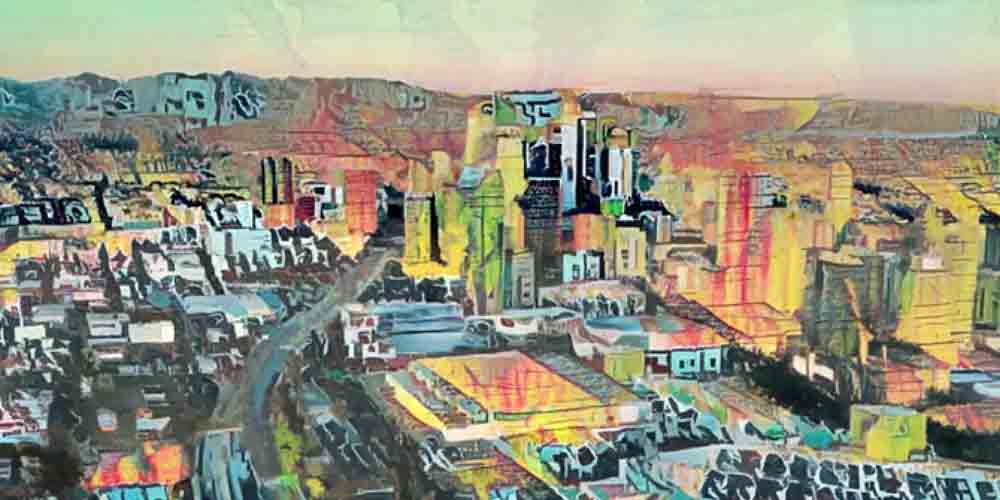
Creating crypto art, whether a video clip, a painting, a video, or whatever, is easier than most people can believe. Maybe the “creation” itself is difficult – like creating a virtual painting – but the process of digitizing and minting the art to turn it into crypto art is very straightforward. As such, you can do it in five simple steps. Let’s check them.
- Get a Crypto Wallet

Source: Grandviewresearch.
The first thing is to create an account in a crypto wallet. This way, you can realize transactions and pay the necessary fees for minting your crypto art in the main NFT marketplaces. There are several digital wallets on the Internet: some hot wallets (based on software and connected to the Internet) and cold wallets (based on hardware and disconnected from the Internet). A crypto wallet is a steady and secure “place” where you store your cryptos and the starting point to participate in blockchain platforms.
We especially recommend the MetaMask hot wallet since it’s really easy to use, and its interface is highly user-friendly. Besides, you can quickly install it on your mobile or use it directly from your browser. Ledger Nano X is also a good alternative when it comes to cold wallets since it provides the best security measures on the market.
- Create the Piece of Art Physically or Virtually

This second step is probably the most important since you define the nature of your crypto art here. What is your specialty? What are you going to create? And most importantly, what technique will you use to create your digital file?
This is because there are two main ways of creating a digital asset as crypto art: you can create your art in an external software or physically and then mint it in NFT marketplaces, or you can create it directly in those specialized platforms.
In this sense, you can take a photo, paint a painting, or even create a sculpture and then digitize it to mint it in the blockchain. It is a method that many artists prefer since they are more skilled with their hands in the real world.
The second alternative is a good method since the platform where you attempt to create the crypto art will provide you with some useful tools to complete the operations. The platforms will define the combination of traits for your crypto if you’re thinking of creating a collection. If not, the platform can also transform a digital image into an NFT in a matter of seconds.
- Upload the Piece of Art to the Platform of Your Preference
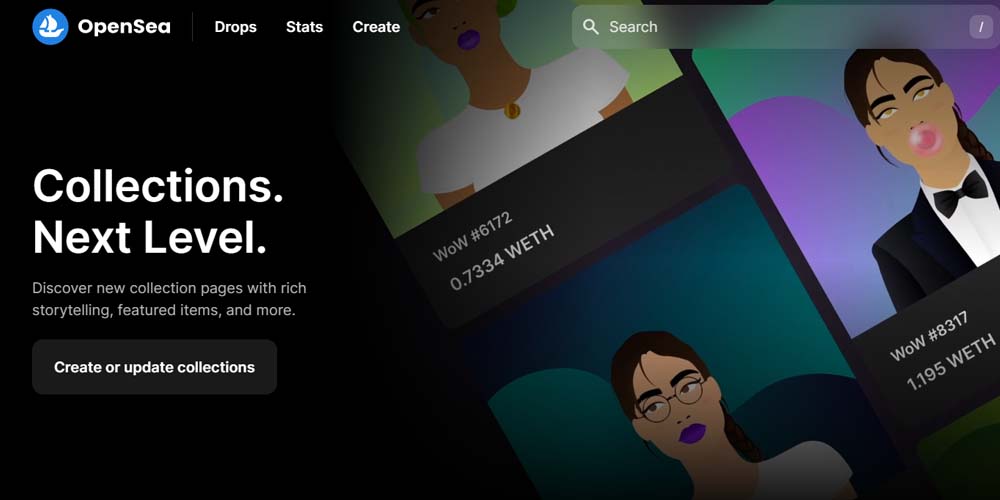
Crypto art is mainly sold online at NFT marketplaces. Consequently, the next step is to upload or mint your digital file to an NFT marketplace. There are multiple alternatives on the Internet. The most recognizable is OpenSea. Other alternatives are SuperRare and Rarible.
To create an account, you will need to link your wallet to the NFT marketplace, which is very easy. Just enter the marketplace and select “Create.” The platforms will prompt you to select the wallet of your preference before creating your NFT. Select the wallet, login, and it’s done! You can complete this process in a matter of seconds.
Following this, you’ll need to upload the digital images and establish the selling method for your crypto art. You can opt for a direct method, like a fixed price, where the buyer pays the listed amount. Alternatively, you can set up an auction, allowing the highest bidder to become the winner and acquire the art piece.
- Review the Final Work and Create the Crypto Art

When minting a crypto fine art, you need to check all the details before making it available for purchase. The platforms will let you check the data, such as the name, the price, the image, and other details. Try to be as specific as you can, as you’re selling real-world objects. This way, the potential buyer will know that your crypto art has a background and a story that supports it.
- Make It Available for Purchasing

Source: Metav.rs.
Once you finish the creative process and the minting, it’s time to make it available for potential buyers. Keep in mind that after making the crypto art available for purchase, you can’t change any aspect of the work. So, check the entire collection or the particular crypto work and be prepared for future sales.
Where Can You Expose Your Crypto Art?
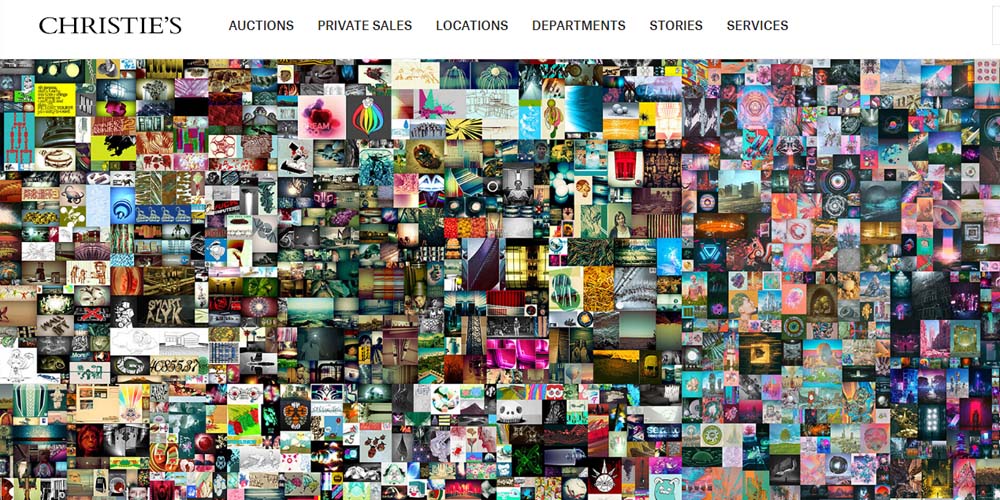
Even though crypto markets are the main platforms where you can expose your crypto art, many other places have come to light due to the popularity of NFTs. For example, there are some auction houses, like Sotheby’s and Christie’s, the classic auction house for real-world art.
There are also some NFT galleries, either virtual or physical, that have started to expose NFT art. One of the most recognized is Spatial, an NFT gallery where you can create your metaverse gallery. This way, users can experience your crypto art from a personal perspective as if they were walking through a real gallery.
The Bottom Line
Crypto art is the present and the future of art. Of course, traditional art still keeps its space in museums, galleries, and streets, but crypto art is starting to gain more and more space in the virtual and physical world.
NFTs verify ownership, and they are still authentic and unique pieces of art, even though they just exist in virtual space. So, if you‘re a real-world artist, you can easily pass to the virtual world just learning to digitize and mint your art.